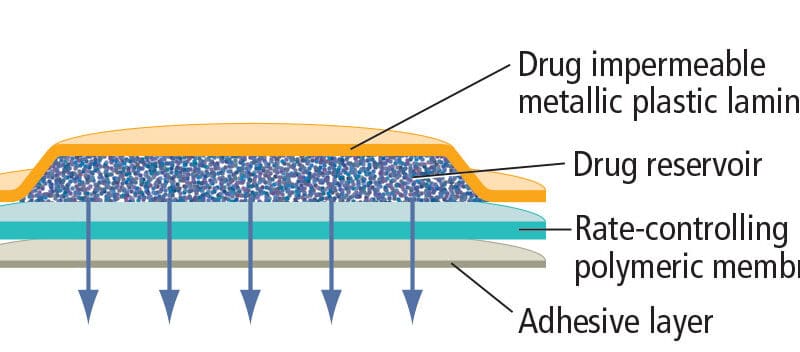The scopolamine transdermal patch is a prescription medicine and very effective in the prevention of nausea associated with seasickness and postoperative nausea. By 2017, worldwide sales of the drug surpassed $370 million and have grown since.
As with most medications, however, there are possible side effects, and caution is needed if there are other medications being taken by a patient; read the medication guide provided by your pharmacist.

Side effects can include acute psychosis with hallucinations and paranoia; and this, with the unique living conditions and physical demands of a sea-going vessel, can be troubling. Charles Doane, who publishes the sailing blog “WaveTrain,” is not a fan of scopolamine. “Of all the seasick remedies I have experience with,” he reflected, “it has the strongest side effects I have witnessed.”
Derived from the flower of the borrachero shrub, it was originally used in spiritual ceremonies by South American natives. In the early 20th century, it was employed as a so-called “truth serum” for interrogations and obtained the nickname “devil’s breath.” In Columbia, there are reports of the drug used in crimes to render victims disoriented. They are robbed and later can’t remember the incident.
Consider the tragic 2015 drowning death of David Pontious who had applied a patch at the urging of the captain, Rick Smith, as they sailed down the East Coast toward the Virgin Islands. According to a USCG report, unbeknownst to Smith, Pontious was taking several prescription medications. Within hours he was hearing voices and after dark the next day became paranoid and delusional, worried that the crew had drugged him and that he was being kidnapped. After physically assaulting Smith and another crewmember for not steering toward a vision he saw in the clouds, Pontious announced that, “If you won’t go left, I’ll go there myself.” He crawled over the lifeline and jumped overboard, hitting his head, and did not resurface.
Of course, without a toxicology report, it’s impossible to tell what caused the hallucinations. Pontious’s father, Frank, believes that the scopolamine patch may have been a contributing factor in his son’s death. “I have a friend who had a crew member have exactly the same thing happen,” he said. “This crew member, his personality changed dramatically (after he put on the patch). He had hallucinations; he was delirious. He jumped overboard. Thankfully, there was a boat following them that picked him up.”

